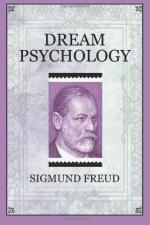We must also steer clear of the distinctions superconscious and subconscious which have found so much favor in the more recent literature on the psychoneuroses, for just such a distinction seems to emphasize the equivalence of the psychic and the conscious.
What part now remains in our description of the once all-powerful and all-overshadowing consciousness? None other than that of a sensory organ for the perception of psychic qualities. According to the fundamental idea of schematic undertaking we can conceive the conscious perception only as the particular activity of an independent system for which the abbreviated designation “Cons.” commends itself. This system we conceive to be similar in its mechanical characteristics to the perception system P, hence excitable by qualities and incapable of retaining the trace of changes, i.e. it is devoid of memory. The psychic apparatus which, with the sensory organs of the P-system, is turned to the outer world, is itself the outer world for the sensory organ of Cons.; the teleological justification of which rests on this relationship. We are here once more confronted with the principle of the succession of instances which seems to dominate the structure of the apparatus. The material under excitement flows to the Cons, sensory organ from two sides, firstly from the P-system whose excitement, qualitatively determined, probably experiences a new elaboration until it comes to conscious perception; and, secondly, from the interior of the apparatus itself, the quantitative processes of which are perceived as a qualitative series of pleasure and pain as soon as they have undergone certain changes.
The philosophers, who have learned that correct and highly complicated thought structures are possible even without the cooeperation of consciousness, have found it difficult to attribute any function to consciousness; it has appeared to them a superfluous mirroring of the perfected psychic process. The analogy of our Cons. system with the systems of perception relieves us of this embarrassment. We see that perception through our sensory organs results in directing the occupation of attention to those paths on which the incoming sensory excitement is diffused; the qualitative excitement of the P-system serves the mobile quantity of the psychic apparatus as a regulator for its discharge. We may claim the same function for the overlying sensory organ of the Cons. system. By assuming new qualities, it furnishes a new contribution toward the guidance and suitable distribution of the mobile occupation quantities. By means of the perceptions of pleasure and pain, it influences the course of the occupations within the psychic apparatus, which normally operates unconsciously and through the displacement of quantities. It is probable that the principle of pain first regulates the displacements of occupation automatically, but it is quite possible that the consciousness of these qualities adds a second and more subtle regulation




